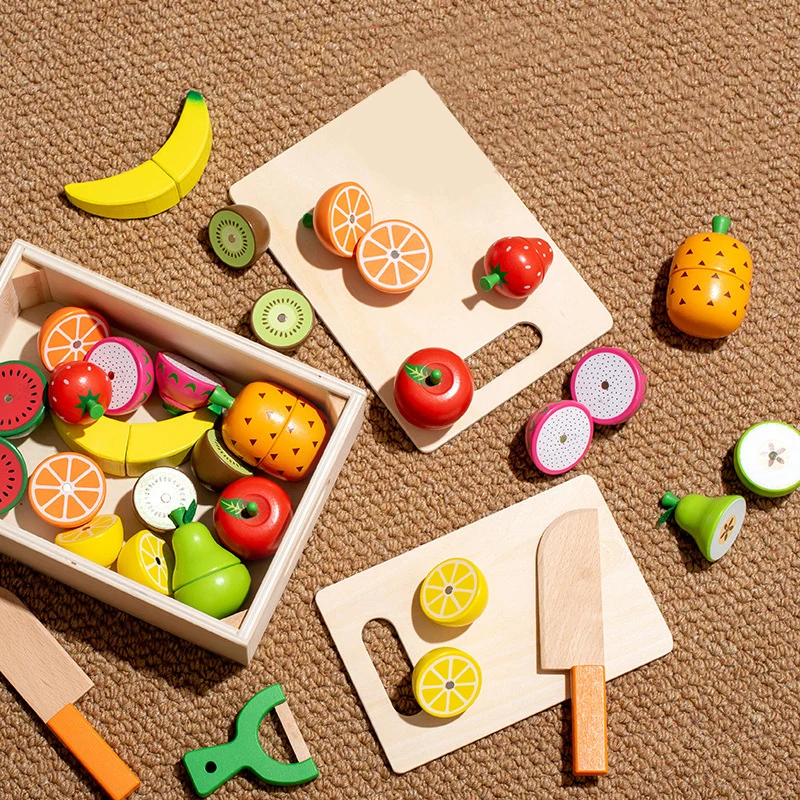The Montessori method to my knowledge, at its roots is heavy on self-direction and respectful of the child-as-creator validated above. At the very core of it, these quite simply are teaching tools - a range of bits and bobs that have been curated to allow independence & sensory exploration with intentionality towards cognitive development. In schools that deeply embrace this philosophy, these materials are treasures-a means of stoking the flames in the minds they aim to ignite. In exploring the importance of Montessori materials in childcare, considering into our minds that makes us to selecting these material, how they contribute and finally setting up learning ambiance within classroom.
Why Montessori Materials are Important in Daycare?
These Montessori materials are not toys - they are tools made to facilitate your child's learning through play. Designing every single of its part makes center on skill/concept and let child to see touch feel / interact will bring the theory nearer to any kid. It is an interact method and aligns perfectly with Maria Montessori, "The child learns more by doing Other theater than he ever do alone. They provide opportunities for problem-solving, critical thinking and understanding of the way things work in your child's environment. These materials teach children precision, fine detail, and most importantly concentration—skills that are fundamental to their future academic success.
Top Quality Montessori Teaching Supplies - How To Choose!
Requires careful and thoughtful work to select the perfect Montessori materials. It starts with a deep appreciation for what the children in our hands (and they are!) as we take care of them actually need during these years. The materials should be age-appropriate and in balance so the children can work at their own level. It must hone in on what would be meaningful for the child their capacity and classroom curriculum am overall goal. A good package would contain the basic skills that need to be targeted: practical life, sensorial and language & math work as cultural topics. Materials are of good quality and durable, visually appealing to encourage engagement with the renewable resources that they grow from while also respecting it.
Importance of Carefully Selected Montessori Materials
Thus, picking Montessori materials becomes irresistibly important for your clean learning environment. They act as a feedback loop between the innate curiosity that all children are born with, and knowledge. These materials give children a sense of achievement, leading to higher levels of confidence and self-esteem. Games and puzzles enable children to become socially engaged with each other, engaging in discovery games both together as well alone- process that certainly fosters learning CBEEBIEEE interceptions such activities promote empathy-building skills from the collaborative element of discovering something new working together strengthening communications between primary parties.
Tips for Teachers, Education Strategies and Montessori Materials
The selection of resources should not to be considered as only buying the Montessori materials; rather it is ongoing, dynamic responding process catering towards educational need and environmental changes happening on regular basis. This is where checking in with children about how they are doing with the materials can be imperative for educators, who might then begin to gauge which things a child might need more help on towards mastering. An Example of an Eco-Friendly, Tech-Integrated Revision to Traditional Montessori Setup Collaborating with other educators and taking workshops can bring new ideas of what Montessori materials to use in your classroom.
Ultimate Guide to Design a Perfect Montessori Classroom
An Ideal Montessori classroom Is Sceince+ Art. We begin by establishing a rich, hospitable space that invites discovery without becoming overstimulating. Having materials on low shelfs children can reach (TES) is another way to promote independence. Each garden plot would be purposeful, containing the pragmatic- life competence in real time -colloquial alongside sensory and linguistic verve coordinated with math corners or how to engage a social study exploration; demarcated but never divided. The studio-a creative space that serves needy and sensitive practitioners who learn using a diversity range of learning styles (modalities) -some quiet spots to reflect about subdued work, individually or some shared centers for communal praxis. In addition, by integrating nature-inspired design components such as plants and exposure to natural light through the use of glass windows along with preferred earthy building materials that further fosters a connection between outdoors and indoors (another key aspect of Montessori education)
Ultimately, the curation & choice of materials are just but two pieces in a puzzle that support young composing learners. These same principles apply in any childcare organization and are foundational for promoting inquiry, creativity, and indeed lifelong learning.

 EN
EN
 AR
AR
 BG
BG
 HR
HR
 CS
CS
 DA
DA
 NL
NL
 FI
FI
 FR
FR
 DE
DE
 EL
EL
 HI
HI
 IT
IT
 JA
JA
 KO
KO
 NO
NO
 PL
PL
 PT
PT
 RO
RO
 RU
RU
 ES
ES
 SV
SV
 CA
CA
 TL
TL
 IW
IW
 ID
ID
 LV
LV
 LT
LT
 SR
SR
 SK
SK
 UK
UK
 VI
VI
 SQ
SQ
 HU
HU
 TH
TH
 TR
TR
 MS
MS
 GA
GA
 CY
CY
 BE
BE
/images/share.png)




